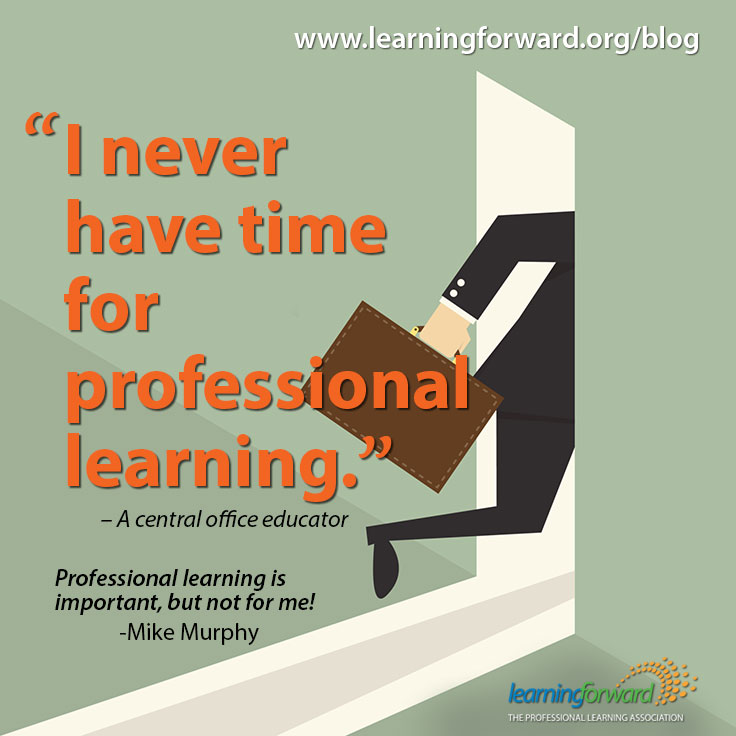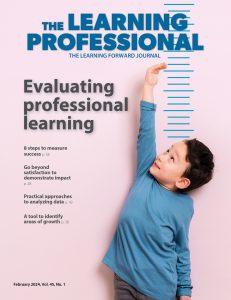I was about to facilitate professional learning with school leaders in a large, urban school district a few months ago. The topics had been planned, the content and process had been reviewed, and I was ready to go. Right before my time started, I had the opportunity to meet the central office educator who was in the room and, according to the organizational chart, in charge of school improvement, instruction, and student performance.
Assuming the best, I introduced myself to her and commented that I was delighted that she was staying for the work and learning. She looked slightly aghast and maybe just a bit perturbed, reminding me that she was going to have to leave and “didn’t have time for professional learning that day.” She added, “I never have time for professional learning. I have too much to do around here.”
Oh, my. Is professional learning — adults getting better at what they do — not important enough for senior decision makers to be part of the improvement language and learning for that district? How prevalent is this assumption? My experience and gut tells me it happens all the time.
In her mind, she was very busy with “important things,” and those things prevented her from learning with her colleagues — the very people she was counting on to enact and sustain change in this struggling district. The absurdity of it all washed over me, and I haven’t been able to get rid of it yet. It begs these questions:
- Do we, as leaders, often separate professional learning from the “important stuff,” either by our actions or behaviors?
- How deliberate are district officials’ actions when they hold themselves above the need to continue to learn about system improvement?
What can we do about this?
The principals in this particular urban district are suffering, partially from their own massive objectives but also from their perceptions that the central office leaders have created their own kingdom and rarely descend from that kingdom to mingle with school leaders. I have to believe that the central office leaders didn’t intentionally create this feeling, but that they often create this feeling accidentally by their misguided behaviors.
Here are a few ideas to turn this wayward ship around. See if your district follows these simple recommendations:
- District leaders should participate in the professional learning and sit with their building colleagues to reinforce the unity of the learning.
- External consultants should only plan and create professional learning that is aligned with the district goals and involves district official planning and endorsement.
- Central office leaders need to handle the pre-learning correspondence so building leaders get a sense of their support of the learning.
- Central leaders must deliberately connect the professional learning to the goals of the district so there is absolute clarity with all who attend.
- There must be follow-up to the professional learning, and this follow-up must be as carefully planned as the professional learning itself, to reinforce the need and support for implementation.
My central office official in this story was certainly busy, but I’m afraid she failed to recognize that school improvement is a partnership. Too many times, it doesn’t seem to be that at all. It isn’t a matter of central office decision makers “deciding” that some group of educators needs to get better at what they do.
I’m ready for a real partnership, where central office leaders and building leaders work together on improvement. Assess where you are in your school or district. What can you do to forge a stronger partnership?







